Comments / Questions (93)
![]() Ana wrote:
Ana wrote:
Hi, I think I understand the pattern and instructions for DROPS / 60 / 13 . But I have one question. I’m making a size L. Do I start each round as the first round, from the beginning of the chart or should I just keep knitting in the round repeating the chart on and on?
26.06.2021 - 06:26DROPS Design answered:
Dear Ana, for the pattern, start with the first row, then go on according to the diagram. Happy Stitching!
26.06.2021 - 09:15
![]() Eva Angervik wrote:
Eva Angervik wrote:
Vi är några (en person stickar M, den andra L) som har problem med att få mönstret snyggt vid sidorna, dvs mellan fram- och bakstycke. Vi är erfarna stickare och när vi stickat andra modeller har intagningar/ utlägg sett likadant ut på bägge sidor. Mönstret har snyggt anpassats. Detta får vi trots ansträngningar inte till. Vad gör vi för fel?
20.06.2021 - 12:54DROPS Design answered:
Hei Eva. Usikker på hva som blir feil hos dere, men har dere lest Strikketips? Fell slik på retten: Før 3 kantmaskene: 2 rett sammen. Etter 3 kantmasker: 1 maske løs av, strikk 1 rett, løft den løse masken over. Fell slik på vrangen: Før 3 kantmasker: 2 vridd vrang sammen. Etter 3 kantm: 2 vrang sammen. mvh DROPS design
21.06.2021 - 11:52
![]() Anke wrote:
Anke wrote:
Na de gerstekorrel beginnen met meerderen aan de zijkanten maar hoe kan ik dan verder in patroon aan de zijkanten?
22.05.2021 - 16:43DROPS Design answered:
Dag Anke,
Je breit de gemeerderde steken in patroon, volgens de teltekening. Dus als j e na de gerstekorrel meerdert, brei je die steken in tricotsteek. Na 4 keer meerderen heb je 1 patroonherhaling erbij in de breedte.
24.06.2021 - 09:39
![]() Cinzia Quarti wrote:
Cinzia Quarti wrote:
Buongiorno, sto facendo taglia S. Nel primo ferro che si inizia lo schema dopo il punto riso ho aumentato subito accanto al marca punto seguendo sullo schema il punto evidenziato S e ho apportato gli aumenti richiesti ma alla fine del giro con l’ultimo aumento prima del marcapunto finisco con una maglia rovescia e lo schema quindi non mi viene completo continuando con inizio giro con 3 maglie dritte. È giusto che venga così??
10.04.2021 - 12:14DROPS Design answered:
Buongiorno Cinzia, ha iniziato sulla maglia corretta del diagramma? Le ripetizioni successive del diagramma sul gjro sono intere, di 8 maglie. Buon lavoro!
11.04.2021 - 12:03
![]() Annet Voss wrote:
Annet Voss wrote:
Waar moet ik beginnen met het afkanten van de armsgaten, bij de eerste steek van de pen of halverwege (dus bij het volgende armsgat?
03.02.2021 - 13:15DROPS Design answered:
Dag Annet,
Je kunt telkens aan het begin van de naald afkanten voor het armsgat.
06.02.2021 - 11:29
![]() Lorinda wrote:
Lorinda wrote:
So I will work every round this way? Start with the second stitch, complete the round using all eight stitches finish the round with Stitch 1 of the diagram? I guess I would have to in order for the seed stitch to line up, correct?
04.11.2020 - 14:21DROPS Design answered:
Dear Lorinda, yes correct, the first repeat on the round is worked over the last 7 sts, then you repeat the 8 sts and finish with the first stitch in diagram. Happy knitting!
04.11.2020 - 17:02
![]() Lorinda wrote:
Lorinda wrote:
Hello, just need clarification. I am making size S and I begin the chart at the corresponding arrow. Does that mean the chart for me will repeat every 7 stitches instead of 8? Or is that arrow only for the beginning of first round only?
04.11.2020 - 12:42DROPS Design answered:
Dear Lorinda, no you just start with the 2nd stitch in diagram (= first repeat on the round), then work the 7 sts in diagram, now repeat all the 8 sts to the end of the round and finish with the first stitch in diagram just before the end of the round. And continue working diagram like this. Happy knitting!
04.11.2020 - 13:47
![]() Lorinda wrote:
Lorinda wrote:
Hello. Love this design. I have a question on the chart. I am making size S and begin 2 sts into the chart. This works out fine to the end of the front. Does the chart continue as though there is no marker denoting the back, or does the chart start over once going to the back? Do I skip the first 2 chart sts again when working on the back section or just keep going with the chart? The front and back are not aligned. The pattern is shifted and there is a wider area of stockinette once row ends
18.10.2020 - 15:18DROPS Design answered:
Hi Lorinda, You start at the arrow, then continue the complete chart to the end of the round (all stitches). Happy knitting!
19.10.2020 - 07:06
![]() Ribault Martine wrote:
Ribault Martine wrote:
Bonjour, Je suis toujours sans réponse aux dernières observations et questions que je vous ai adressé hier. Comme je l'ai écrit, je n'arrive pas à faire en sorte que les 3m de point de riz soit bien régulières avec l'inclusion des augment à faire au fur et à mesure. Avez vous une solution à proposer ? L'idéal serait de pouvoir disposer d'1 diagramme complet de l'ouvrage avec l'emplacement des augmentations tous les 5 cm. Je reste dans l'attente de votre réponse. Cdlt
28.07.2020 - 12:40DROPS Design answered:
Bonjour Mme Ribault, désolée pour le retard des réponses pour cause de vacances d'été. Les augmentations se tricotent dans le point fantaisie sur les côtés pour que vous ayez toujours le même motif sur le devant et sur le dos, autrement dit 5 mailles jersey espacées de 3 m point de riz, vous devrez donc tricoter les augmentations soit au point de riz, soit en jersey - le motif ne tombera naturellement plus juste au niveau des marqueurs sur les côtés. Rappelez-vous de contacter votre magasin, il sera beaucoup plus simple pour eux de vous aider, même par téléphone. Bon tricot!
29.07.2020 - 11:27
![]() Ribault Martine wrote:
Ribault Martine wrote:
Bonjour, (suite du message précédent) Je suis le point d\'abandonner la réalisation de ce modèle, qui pour moi est irréalisable en l'état avec ces explications, trop sugsinte à mon goût pour la réalisation des augmtat en point fantaisie au fur et à mesure. Avez vous une solution ? Peut être une vidéo avec les augmemt dans du point de riz, si c' est ça la solution, pour que le point fantaisie soit régulier dans ce modèle tricoté en rond ?
27.07.2020 - 16:47DROPS Design answered:
Bonjour Mme Ribault, rappelez-vous que, pour toute assistance et aide personnalisée à la réalisation d'un modèle, vous pouvez vous adresser directement au magasin où vous avez acheté votre laine, même par mail ou téléphone, on saura vous conseiller et vous assister. Bon tricot!
29.07.2020 - 11:12
Summer Charm |
|||||||
|
|
|||||||
DROPS Sleeveless Top in Muskat.
DROPS 60-13 |
|||||||
|
Gauge: 21 sts x 28 rows in stockinette st = 10 x 10 cm [4" x 4"]. Garter st, when knitting flat: Knit all sts, all rows. Seed stitch (on an even number of sts): Row 1: * K 1, P 1 * Row 2: * P 1, K 1 * Seed stitch (on an odd number of sts): All rows: K 1, *P 1, K 1* Seed stitch (worked in the round): Round 1: * knit 1, purl 1 * Round 2: * knit the purl sts from the previous round and purl the knit sts from the previous round * Pattern: See chart (1 chart = 1 repeat). The pattern is seen from the right side. Arrows indicate the starting points on the chart for different sizes. Make decreases as follows on the right side: Before the 3 edge sts: K 2 tog. After the 3 edge sts: sl 1, K 1, psso Make decreases as follows on the wrong side: Before the 3 edge sts: P 2 tog into back of st. After 3 edge sts: P 2 tog. BODY Cast on 176 (192-208) sts; join and place a marker at the join. K1 round, P1 round, then work 3 rounds in seed st. Attach a marker at each side, front = 87 (95-103) sts, back = 89 (97-105) sts. Establish Pattern - start at the appropriate arrow on the chart. After the seed st border, on next round inc 1 st at each side of the markers, repeat every 5 cm [2"] a total of 4 times = 192 (208-224) sts. Front = 95 (103-111) sts, back = 97 (105-113) sts. Work the increased sts into the pattern as you go along. When the work measures 27 (28-28) cm [10⅝" (11" - 11")] work 3 rounds with seed st over 6 (6-7) sts at each side of each marker (work rem sts as before), on next round bind off 3 (3-4) sts for armholes at each side of each marker, and then work back and forth on the needles - front = 89 (97-103) sts, back = 91 (99-105) sts. Front: = 89 (97-103) sts. Dec 1 st for armholes inside 3 edge sts (work the edge sts in seed st throughout) at each side every row 5 (5-8) times, then every other row 4 times, then every 4th row 2 times = 67 (75-75) sts. When the work measures 37 cm [14.5"] work 3 rows with seed st over the center 15 (23-23) sts (work rem sts as before), on next row bind off the center 9 (17-17) sts for the neck, and work each shoulder separately. Continue and dec 1 st at neck edge - dec inside 3 edge sts (work these sts in seed st throughout) on every row 6 times, then on every other row 2 times, then every 4th row 2 times. Bind off when the work measures 50 (51-52) cm [19.75" (20" - 20.5")]. Back: = 91 (99-105) sts. Bind off for armholes inside 3 edge sts as for the front = 69 (77-77) sts. When the work measures 47 (48-49) cm [18.5" (18⅞" - 19.25")] work 3 rows with seed st over the center 33 (41-41) sts (work rem sts as before), on next row bind off the center 27 (35-35) sts for the neck and work each shoulder separately. Continue and dec 1 st at each neck edge inside 3 edge sts (these sts are worked in seed st) every row 2 times. Bind off when the work measures 50 (51-52) cm [19.75" (20" - 20.5")]. Assembly: Sew shoulder seams. Crochet a border around the neck from the right side as follows: 1st round : 1 single crochet (sc), * ch 4 over 2 knit sts, 1 slip st in the 3rd knit st *, repeat * - *. 2nd round : * 4 sc in the ch space, 1 slip st in the slip st from the previous round *, repeat * - *. |
|||||||
Diagram explanations |
|||||||
|
|||||||
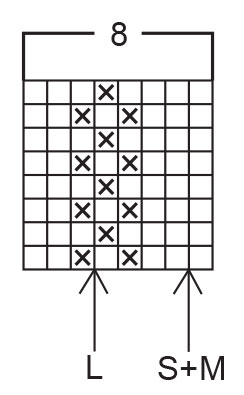 |
|||||||
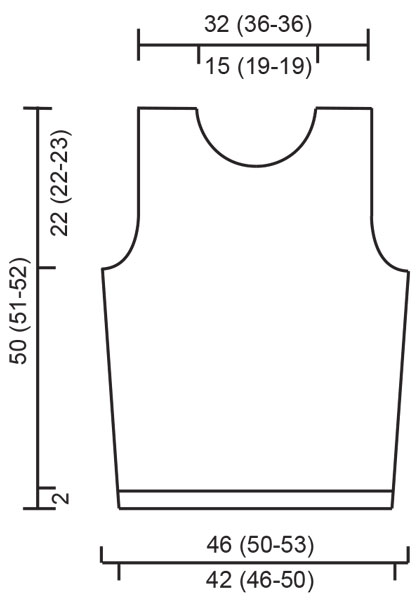 |
|||||||
Have you finished this pattern?Tag your pictures with #dropspattern or submit them to the #dropsfan gallery. Do you need help with this pattern?You'll find 23 tutorial videos, a Comments/Questions area and more by visiting the pattern on garnstudio.com. © 1982-2025 DROPS Design A/S. We reserve all rights. This document, including all its sub-sections, has copyrights. Read more about what you can do with our patterns at the bottom of each pattern on our site. |
|||||||












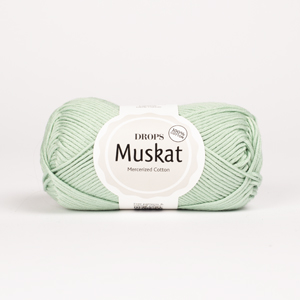












































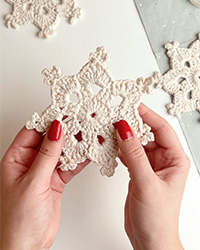
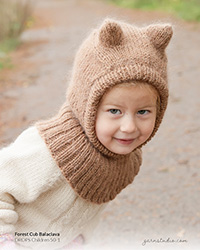
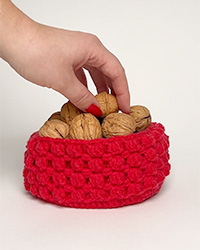
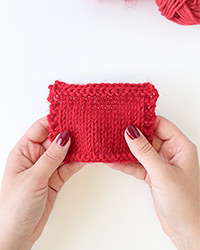

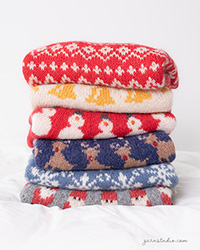
Post a comment to pattern DROPS 60-13
We would love to hear what you have to say about this pattern!
If you want to leave a question, please make sure you select the correct category in the form below, to speed up the answering process. Required fields are marked *.